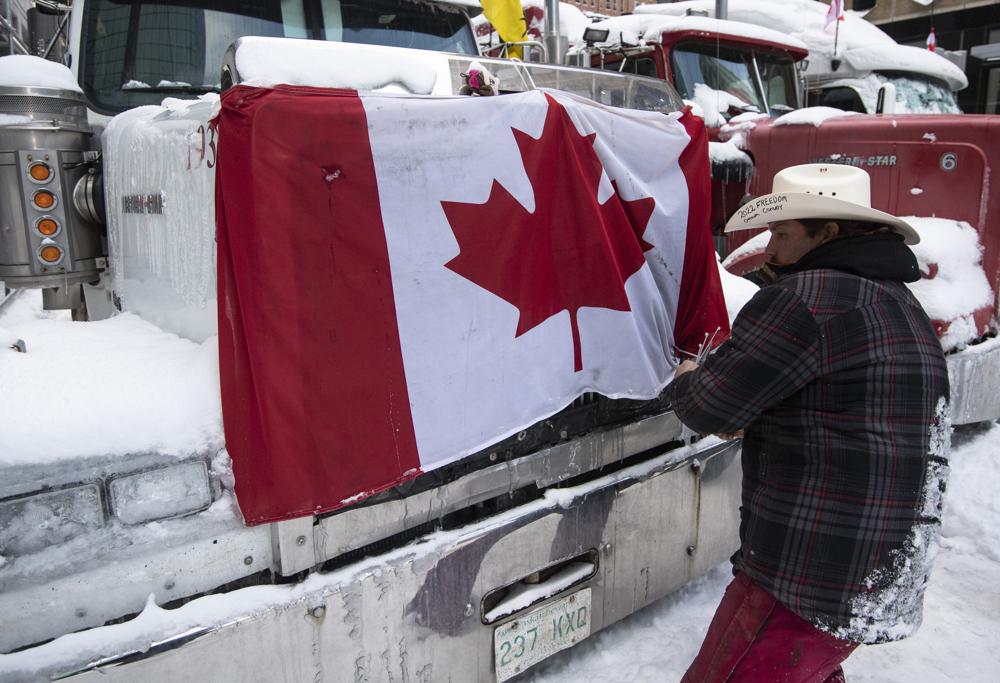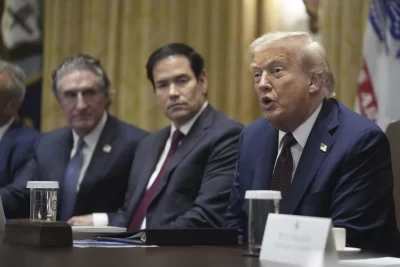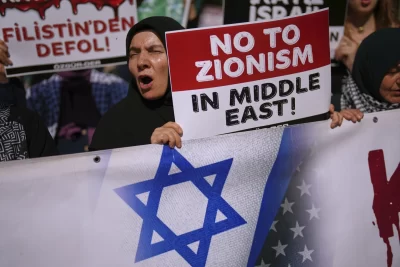
TORONTO— Most of the streets around the Canadian Parliament are quiet now. The Ottawa protesters who vowed never to give up are largely gone, chased away by policemen in riot gear. The relentless blare of truckers’ horns has gone silent.
But the trucker protest, which grew until it closed a handful of Canada-U.S. border posts and shut down key parts of the capital city for weeks, could echo for years in Canadian politics and perhaps south of the border.
The protest, which was first aimed at a COVID-19 vaccine mandate for cross-border truckers but also encompassed fury over the range of COVID-19 restrictions and hatred of Prime Minister Justin Trudeau, reflected the spread of disinformation in Canada and simmering populist and right-wing anger.
“I think we’ve started something here,” said Mark Suitor, a 33-year-old protester from Hamilton, Ontario, speaking as police retook control of the streets around Parliament. Protesters had essentially occupied those streets for more than three weeks, embarrassing Trudeau and energizing Canada’s far right. Suitor believes the protests will divide the country, something he welcomes.
While most analysts doubt the protests will mark a historic watershed in Canadian politics, it has shaken both of Canada’s two major parties.
“The protest has given both the Liberals and the Conservatives a black eye,” said Nelson Wiseman, a political science professor at the University of Toronto. Trudeau’s Liberals look bad for allowing protesters to foments weeks of chaos in the capital city, he said, while the Conservatives look bad for championing protesters, many of them from the farthest fringes of the right.
The conservatives “have to be careful not to alienate more moderate voters, who are generally not sympathetic to the protesters or right-wing populism more generally,” said Daniel Béland, a political science professor at McGill University in Montreal.
The self-styled Freedom Convoy shook Canada’s reputation for civility, inspired convoys in France, New Zealand and the Netherlands and interrupted trade, causing economic damage on both sides of the border. Hundreds of trucks eventually occupied the streets around Parliament, a display that was part protest and part carnival.
Authorities moved quickly to reopen the border posts, but police in Ottawa did little but issue warnings until the past couple days, even as hundreds and sometimes thousands of protesters clogged the streets of the city and besieged Parliament Hill.
“It’s high time that these illegal and dangerous activities stop,” Trudeau declared in Parliament a few days ago, speaking just a few hundred meters from the protests.
On Friday, authorities launched the largest police operation in Canadian history, arresting a string of Ottawa protesters and increasing that pressure on Saturday. Eventually, police arrested at least 170 people and towed away dozens of vehicles. Many protesters retreated as the pressure increased.
The Ottawa protests – the movement’s last major stronghold – appeared to be largely over by Saturday evening, though some protesters warned they were only regrouping.
As it did in the United States, COVID-19 quickly became a political issue in Canada.
Coronavirus health restrictions became a political cudgel for Canada’s far right, which accused Trudeau of authoritarianism. But while the restrictions clearly benefitted the far-right People’s Party of Canada, things are more complicated in the Conservative Party.
Only recently have some Conservative leaders fully embraced the pushback against vaccine mandates and coronavirus restrictions.



